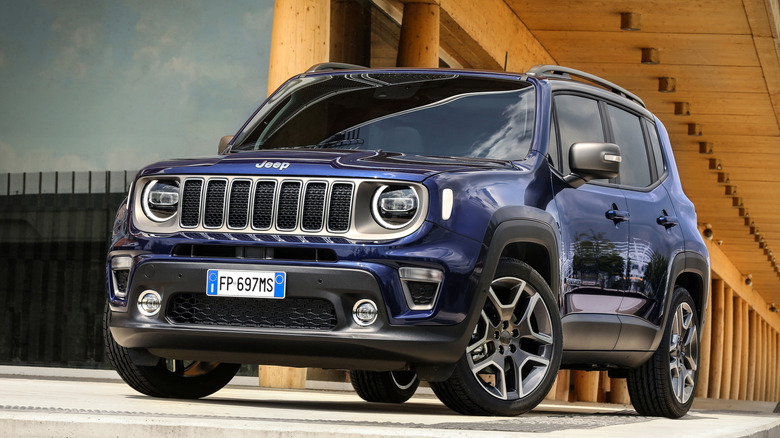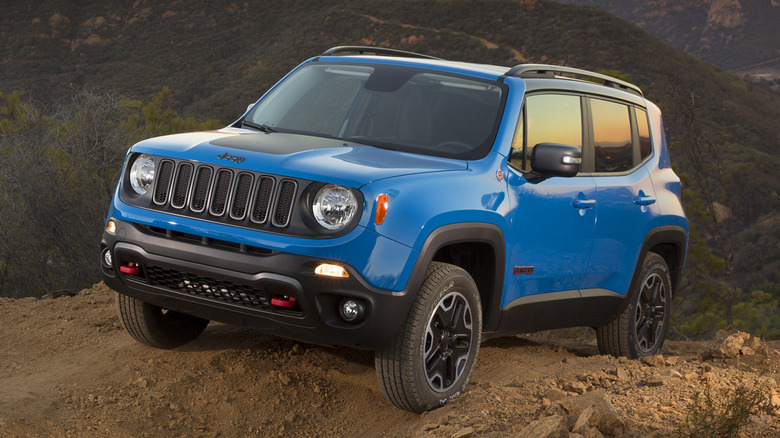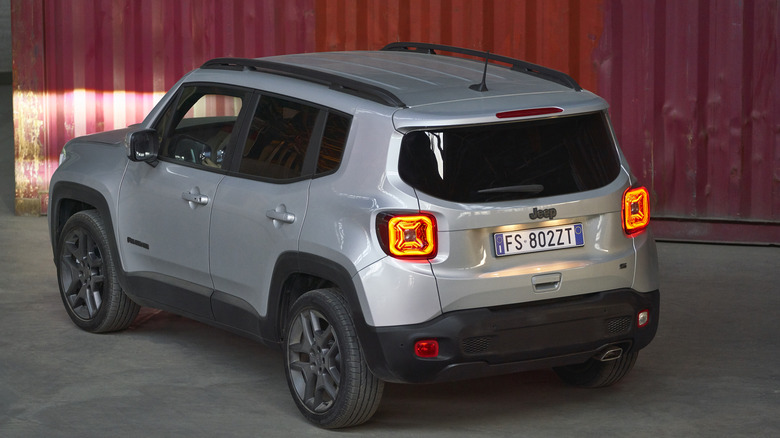These Are Jeep Renegade Years To Avoid, According To Owners
The Jeep Renegade was revolutionary for Jeep when it debuted for the 2015 model year. Instead of being a tough, go-anywhere off-roader with powerful engines and four-wheel drive, the Renegade tackled a distinctively different market. It was smaller, cheaper, and clearly targeted more toward urban use, although optional all-wheel drive ensured that it would also be sure-footed in adverse weather. That, along with familiar Jeep styling cues, means it fit right in within the American automaker's range, and for the most part, enthusiasts of the brand saw it as a welcome addition.
By the 2023 model year, the Renegade was finished, which means a total of nine years for buyers to choose from. While not inherently troublesome, Jeep Renegades do have some common issues that buyers will need to look out for, and in turn, this means that some model years are better than others. Rather than seeking advice from third-party reviewers, though, we've decided to see what actual owners of the Jeep Renegade think, to highlight the model years best avoided.
As is quite common, it appears that most complaints on some platforms involve the first-year 2015 Renegade. This isn't uncommon, as new cars can only have been tested so much by the manufacturer before being released; therefore, it's possible that some issues go unnoticed. Over time, manufacturers can react by tweaking and changing their vehicles over later model years, hopefully ensuring that the model gets more reliable as production goes on. Unfortunately for Renegade fans, while Jeep did tweak the recipe as the years progressed, the Renegade retained some major flaws during its first four years.
The 2015 Jeep Renegade is best avoided
The most reported gripe of 2015 Jeep Renegade owners is trouble with the nine-speed automatic transmission. It's been reported that the auto 'box surges, hesitates, slips out of gear, and just generally plays up in any and every way imaginable. Fortunately, 2015 models were also offered with a six-speed manual, which will, of course, sidestep these troubles, but most U.S. drivers prefer an auto, so this won't be the answer for everyone.
As if that wasn't headache enough, the first-year Renegade also suffers from a myriad of engine issues. Many owners have complained that the engine simply will not turn over, while others have complained of issues like excessive oil consumption, rough idling, or the engine cutting out altogether while driving. These issues will commonly trigger check engine warning lights, which shouldn't be ignored unless you're looking to cause further avoidable damage. For those looking to avoid such headaches, it may be better to go for a Renegade with the smaller 1.4-liter turbo engine, as there are a few common problems with the 2.4-liter TigerShark inline-4.
Other owner-reported issues include several electrical gremlins, issues with the brakes, and the cooling system. In short, Jeep's Renegade is hardly an industry leader when it comes to reliability, and with the oldest examples hitting 10 years old now, maintenance is only set to get more intensive. Having said that, the 2015 Renegade is not an expensive buy, and average maintenance bills are relatively affordable, so buying one might not be a terrible decision — just be sure to know what to look for when buying one, and consider a manual-equipped model with the 1.4-liter.
Other early Renegades aren't that great either
Not much changed during the Renegade's early years, and as such, it makes sense that the 2016 and 2017 Renegade also crop up as models to avoid. Perhaps the most alarming statistic is that the 2017 model has 550 complaints on the NHTSA website. While a significant number of those complaints relate to the nine-speed automatic transmission and 2.4-liter engine, there are also a whole host of other concerns mentioned. The complaints and concerns of these owners are echoed by Kelley Blue Book's (KBB) findings, which suggest that both the 2016 and 2017 Renegade carry a medium risk of requiring a major repair during ownership. On the plus side, KBB at least reports that most service jobs are affordable.
However, KBB also reports that faulty fuel pumps are quite common and that owners are forking out significant sums to have these replaced. Turning back to the NHTSA, it's immediately apparent that the issue isn't isolated to just a few owners; not only have many complained about the issue, but Jeep has actually issued a recall for the 2017 – 2018 Renegade and its troubled fuel pump.
While that's good news, it is an issue to watch out for. If you end up with a Renegade that hasn't been repaired, it may only be a matter of time before you're also left stranded with a faulty fuel supply. There are some tests you can do to check if the fuel pump is working correctly, and perhaps the easiest is to turn the ignition on and listen for it. If you don't hear it whir into life, it's a Renegade you won't want to buy.


